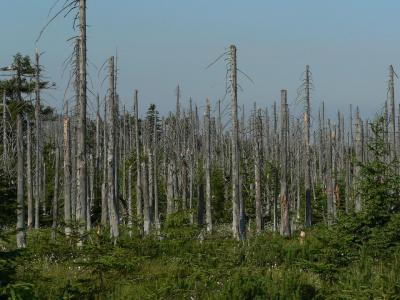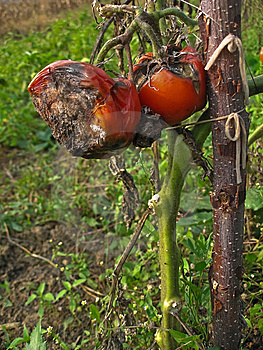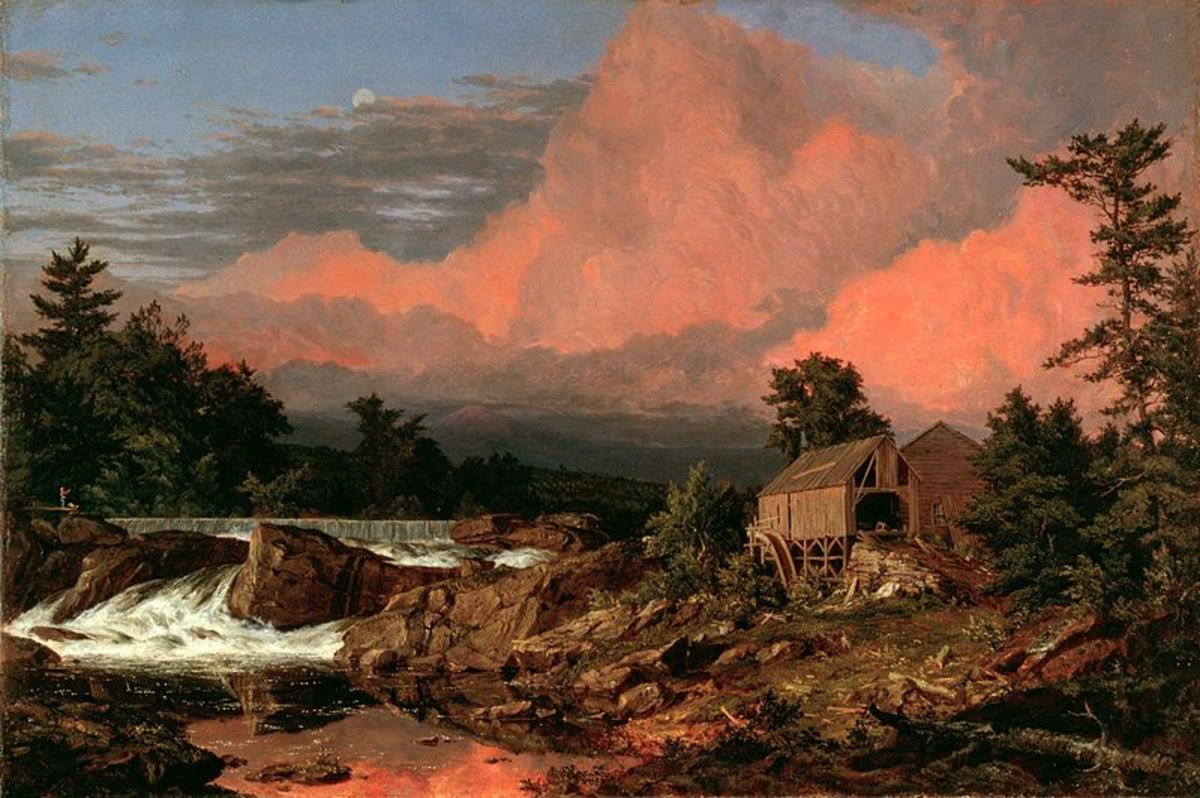The Danger of Pollution Based Acid Rain


Poor industrial practices lead to acid rain that is ruinous to the whole ecosystem.
Pollution based acid rain, acid in suspension and precipitation is a threat to natural ecosystems and to all structures, new and ancient, around the world. In addition, it leaches into the soil, acidifying it, making crops harder to grow and it eventually ends up in the oceans to begin erosion of calcium carbonate, releasing more carbon dioxide which further acidifies the ocean and also adds more greenhouse gasses to the atmosphere. A kind of vicious feedback loop is created that has a long term disastrous effect. Acid laced precipitation can be initiated in the form of powders such as volcanic sulfur and carbon dioxide, man-made chemicals that are injected by careless dust control or from industrial waste “smoke stacked” into the atmosphere. These either settle directly onto anything below, or are mixed with rain, hail, snow, fog and humid air. The running of hundreds of millions of internal combustion engines of various types add carbon dioxide, nitrous oxide and other “trace” chemicals. All these settle out onto anything on the ground or seas or are absorbed by breathing it into our bodies.
Have you had stinging watery eyes while in a large metropolis? Chances are, you are feeling the acidification of your eyes from the concentrated levels of nitrous oxide that hovers as a brown fog, especially during temperature inversions. Concentrated pollution gets trapped close to the ground under a blanket of cold air trapping warm air below. Do you find that your brand new shiny car or that fresh coat of paint on the house is becoming dull and etched looking long before its time? Look again to acidification in the atmosphere. Even glass will etch given enough time due to acid in the atmosphere and that which is washed out in precipitation. Acid in the form of hydrogen sulfide in regions where there is industrial processes that use or release sulfur is breathed into the lungs to combine with moisture to form sulfuric acid, which then erodes lung tissue leading to emphysema. Thus pollution leads to respiratory based problems that medical advisers warn us about on the news during major incursions of air born pollutants.
Pollution that arises from natural and man-made sources eventually settles, either as a dust or by being washed out by precipitation. In the dust form, rain will liquefy it and create a powerful acid. The less rain there is, the more powerful is the corrosive effect, but even a dilute acid from lots or rain on a powder residue will have an impact. Acid based pollution corrodes anything that it comes in contact with. Some materials are more susceptible to corrosion than others. Anything living is the most sensitive, then anything with calcium carbonate, raw unprotected metal such as iron and aluminum, then harder substances and finally glass and silicon based materials. All exposed materials will be affected. It is thought by some, that erosion speeds up after sulfur is injected into the atmosphere by volcanic eruptions.
Many pollutants that man adds to the atmosphere have dangers both to nature and man. The obvious ones are nitrous oxide, carbon dioxide, carbon monoxide, hydrogen sulfide and methane. Less obvious are the dust that is lofted into the atmosphere from a host of industrial processes. Some of these come from steel manufacture and others from pulp and paper factories. Much comes from coal burning power plants by way of fine particle soot. Oil refining also adds plenty of wastes that can acidify the atmosphere. Oil consumption adds to the mix by throwing in more carbon dioxide and nitrous oxide.
Acid rain and what we can do to correct it
Acid collects from pollution into the atmosphere and then it is washed out in rain and snow. It falls on everything. In Europe, whole stretches of forest are under threat of complete annihilation due to concentrated acid rain that results from heavy industry ejecting high levels of uncontrolled pollution into the atmosphere. In China the story is the same. China and India are the major contributors to what is now called brown clouds. These are made primarily from industrial waste where power and processes are run by coal. Much of the pollution in China wafts out over the ocean and a lot of it ends up over North America. The amount of pollution blocks out the sun, especially in China, and the temperature drops. Some of the pollution is washed out in oceanic storms and goes directly into the Pacific Ocean where it begins to break down calcium carbonate and interfere with ecosystems.
The Oceans, which are slightly alkaline at PH level 7.2, are gradually becoming acidified. In other words, the PH value is slowly tending to go down toward the acid side of the –acid-alkaline scale. Some species can tolerate a slight increase in acidity, but others cannot and they are now increasingly at risk. It is akin to the slight warming of the oceans that are killing off the coral. Whole ecosystems are at risk and if one species succumbs to the acidification, then interdependent species will also suffer and collapse. A chain reaction based on sensitive dependence of one species upon another can escalate to the point of having a direct impact on our fishing stocks and our quality of life as a result.
On land, the acid rain acidifies the soil and kills trees and makes it difficult to grow crops. Acid rain eats away at surfaces such as marble and limestone and thus is eroding our architectural and sculptural heritage. All around, acid rain that is born from pollution is a negative thing. To a limited extent, we can cope with the acidification of soils on cropland by adding a little calcium carbonate or crushed seas shells. But we cannot do it for whole tracts of wild forest-lands. These suffer with the browning of needles and leaves and ultimately the trees die if the soil becomes too acidic. Even birds suffer when they drink acidified water, which in turn weakens shells on eggs and threatens the next generation before they are born. The acidification of rain is particularly true if the pollutant is hydrogen sulfide which can be converted to sulfuric acid when it mixes with rain. In areas where pulp and paper are being manufactured from raw trees, this is a particular danger that goes beyond the annoying smell. Anything down wind also suffers.
In countries where there is a lot of artistic and architectural heritage, acid rain can be ruinous to anything that is made of marble or limestone. The acid rains etch and mark the surfaces at the weakest locations, like at joints in ancient buildings and natural fine cracks in sculpture work exposed to the elements. Even in newer countries where there isn’t a lot by way of heritage, the danger is to concrete that can be leached and eroded. The result over a long period is crumbling infrastructure that will eventually have to be replaced. Ironwork that is not painted will experience and accelerated rusting and will also have to be replaced sooner.
Acid rain hits home when it dulls the shine on our new cars and outdoor equipment. It will even wear exterior painted surfaces faster, requiring more maintenance. Those who are expert in gardening will notice telltale signs of too much acid by merely examining the leaves of flowering plants, vegetables, trees and lawns.









